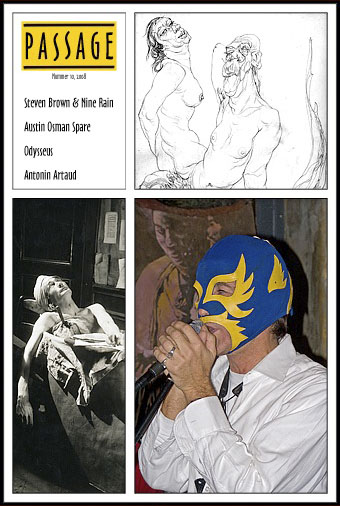Sentenced to a lifetime of stress
| Lindsay Anderson.
Category: {theatre}
Theatre
Yes to pansy but no to bugger: letters show censors’ war on permissiveness
Passage 10
My good friend Ed Jansen writes to inform me that a new edition of his web (and occasionally, print) magazine Passage has appeared. Contents can be seen above: musician Steven Brown, a member of the excellent Tuxedomoon with a separate solo career; artist and occultist Austin Osman Spare who’s been featured here several times; mythical hero Odysseus and playwright, poet and actor, Antonin Artaud. Since Ed is Dutch, the contents are also largely in Dutch but at { feuilleton } we try to be at least occasionally international. The Steven Brown section includes some English language material and the magazine is worth a look for the pictures, especially the Spare work which includes a number of examples I haven’t seen before. Once again I can’t help think that Spare is long overdue a serious monograph from the likes of Thames & Hudson.
Elsewhere on { feuilleton }
• The illustrators archive
Previously on { feuilleton }
• Austin Spare’s Behind the Veil
• Another playlist for Halloween
• Austin Osman Spare
Over the rainbow
Over the rainbow
| Marina Warner on The Wizard of Oz from book to screen to stage.
Making us all imbeciles
Making us all imbeciles
| (UK) censors were once sent packing. But now they’re back.

